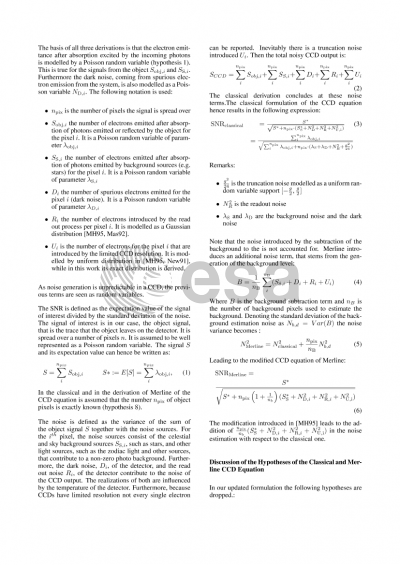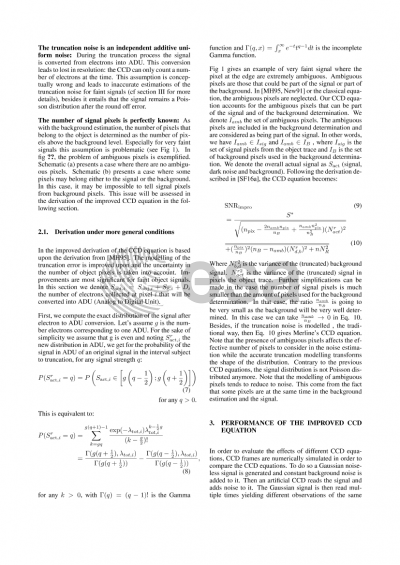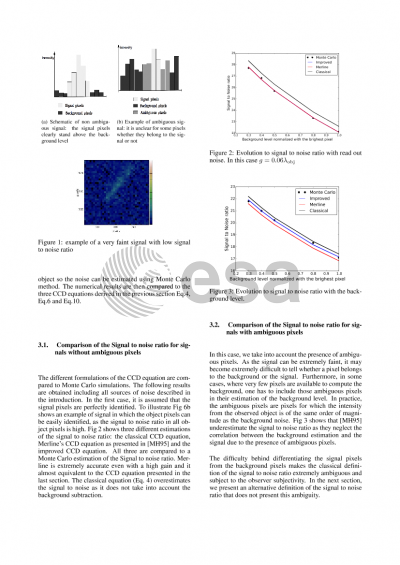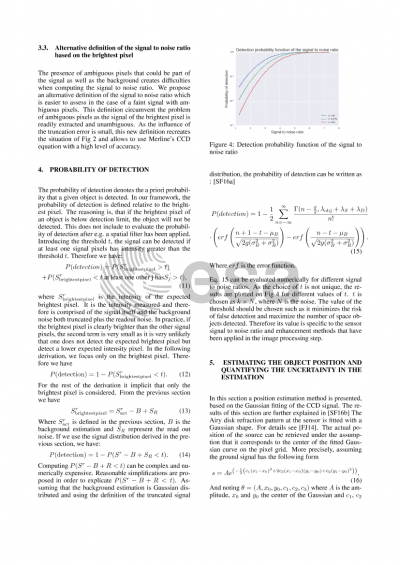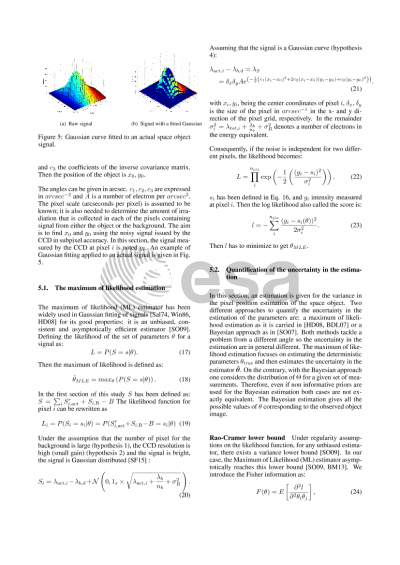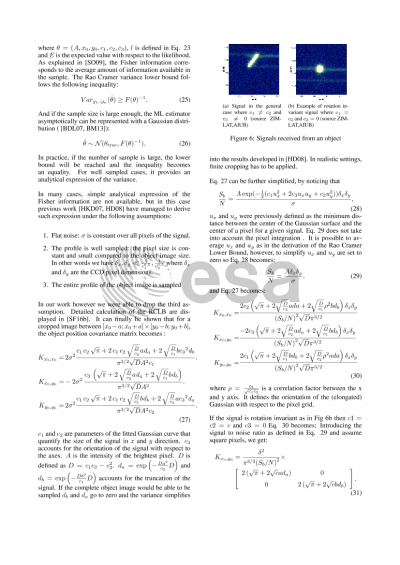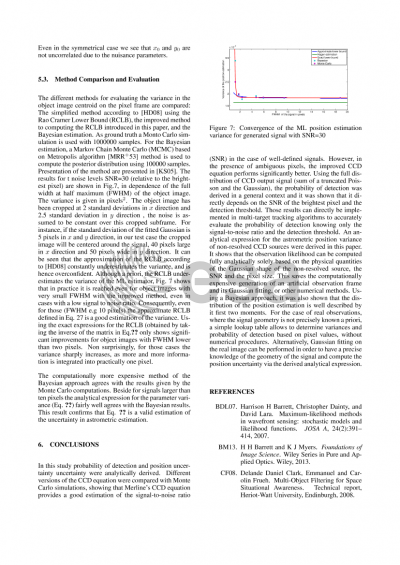Document details
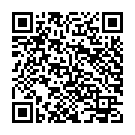
Abstract
Charged Coupled Devices (CCDs) and Complementary Metal-Oxide-Semiconductors (CMOSs) revolutionized scientific imaging. Even though CCD technology has dramatically improved since the seventies, satellite and star observation is degraded by inevitable noise generation due to the imaging device itself or spurious light source in the background.In the detection and tracking of near Earth space objects three key quantities are crucial: The signal to noise ratio of the object images for a given sensor and observation scenario, the resulting probability of detection of the object, and the accuracy and precision of the astrometric object position that can be extracted from the image. All three quantities are not independent but heavily intertwined. In this work we propose an original formulation for all three and explicitly show how they are related. Successful attempts to estimate the Signal to Noise ratio have been carried out by Newberry and Merline et al. but the recent needs for high precision and reliable observations in satellite tracking lead us to look for improvements in the pre-existing CCD equations. This study aims at critically inspecting the hypotheses used to derive the CCD equation to provide a rigorous derivation of it. Additional modelling terms are derived in order to more precisely estimate the Signal to Noise Ratio (SNR) of a given image. In particular the truncation noise is accurately modelled and the notion of ambiguous pixels, ie. pixels for which it is not clear either they belong to the signal itself or the image background. The obtained expressions are then compared to the CCD equations in literature and computer run simulations of CCDs. In a second step the expression for the probability of detection is investigated using a precise modelling of the signal noise distribution. The expression is validated with computer based experiments.
Object astrometric positions are crucial inputs of tracking algorithms or orbit determination techniques. They can be obtained from CCD images through a Gaussian fit method developed in Hagen et al. (2008). Due to the diffraction effects from the optical system and the CCD generated noise, the object astrometric position can be estimated with a limited resolution. This is due to the stochastic behaviour of the image generating process. For a given observation scenario there can be multiple signal output and object estimated position given by the Gaussian fitting algorithm. The uncertainty in the object position is crucial and directly used in multi target tracking algorithms. In this work, we propose a closed form expression for the object position uncertainty. This analytical expression can be used directly instead of using expensive Monte Carlo based algorithms. Numerical experiments show how our expression presents significant improvements with respect to other expressions of the object position uncertainty.
Preview

